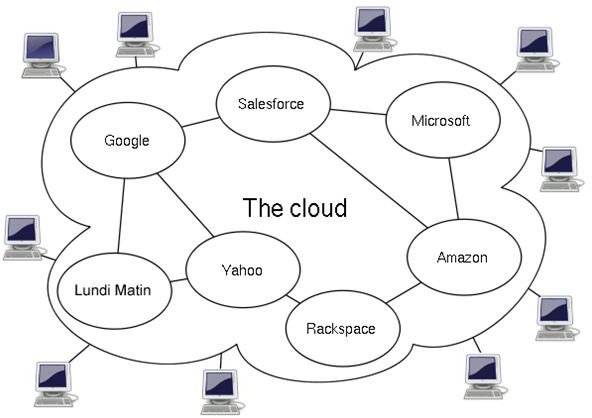Find Out: Is Cloud Computing Green?
Cloud Computing is Green in Theory
Cloud computing allows companies to access important software and infrastructure resources without the need of hosting them on
site. In this operating model, resources are consolidated in data centers that service hundreds or thousands of customers. This concentration of computing power could eliminate the energy wasted powering idle or underutilized servers that ordinary characterize the server rooms of businesses around the world.
Another aspect of cloud computing, the ability to access computing resources from virtually any computer connected to the Internet, accomplishes a green role by making it possible for remote workers to be on duty without commuting to the office. This reduces the consumption of fossil fuels and the harmful pollution that results from vehicle emissions.
Finally, cloud computing can be considered to be green because of its minimal client requirements. Because computing is performed on the server and its results accessed by IP clients, the constant need for upgrades is largely alleviated, extending the life of hardware investments. Thus, the burden on the environment can be relieved by fewer material requirements and fewer discarded computing devices. So, is cloud computing green?
Image Credit: Wikimedia Commons/Sam Johnston
The Reality of Cloud Computing
Theoretically, cloud computing is green, but does that theory match reality? Some critics of green claims concerning the cloud point out that important factors cannot be easily measured, meaning that verifying those claims is difficult.
For example, although cloud computing can reduce the amount of underutilized resources at the local level, there is is no way to confirm the level of efficiency at software and infrastructure hosting providers.
In fact, the problem could be exacerbated as cloud vendors keep a surplus of servers on line so that it can readily handle increases in demand.
Another problem with cloud computing is that its scalability and accessibility means that users can readily increase their resource usage beyond what they would use were they limited to their own internal networks. This increase in consumption can easily offset any other green advantages the cloud has to offer.
Conclusion
Unfortunately, the extend to which cloud computing is green depends on information publicized by service providers who have interests in casting their business in a favorable light. Without the ability to access power consumption and resource utilization numbers from them, there is no way to determine if cloud computing is actually helping to save the environment or if it is just the latest trend in IT that many now profit from regardless of the impact of their business.
Regardless of the green status of cloud computing, however, that technology is here to stay. The old days when companies would purchase software and then the hardware to run it seem to be over. The efficiencies businesses gain from leveraging the cloud are now a necessity for survival in an increasingly competitive world.
Meanwhile, we will hope that the underlying efficiencies of cloud computing make it truly green someday, for now, many of us are still asking, is cloud computing green?
References
Urquhart, James. “Cloud computing’s green paradox”, https://news.cnet.com/8301-19413_3-10428065-240.html
Linthicum, David. “OK, cloud computing is green. So what?”, https://www.infoworld.com/d/cloud-computing/ok-cloud-computing-green-so-what-859
